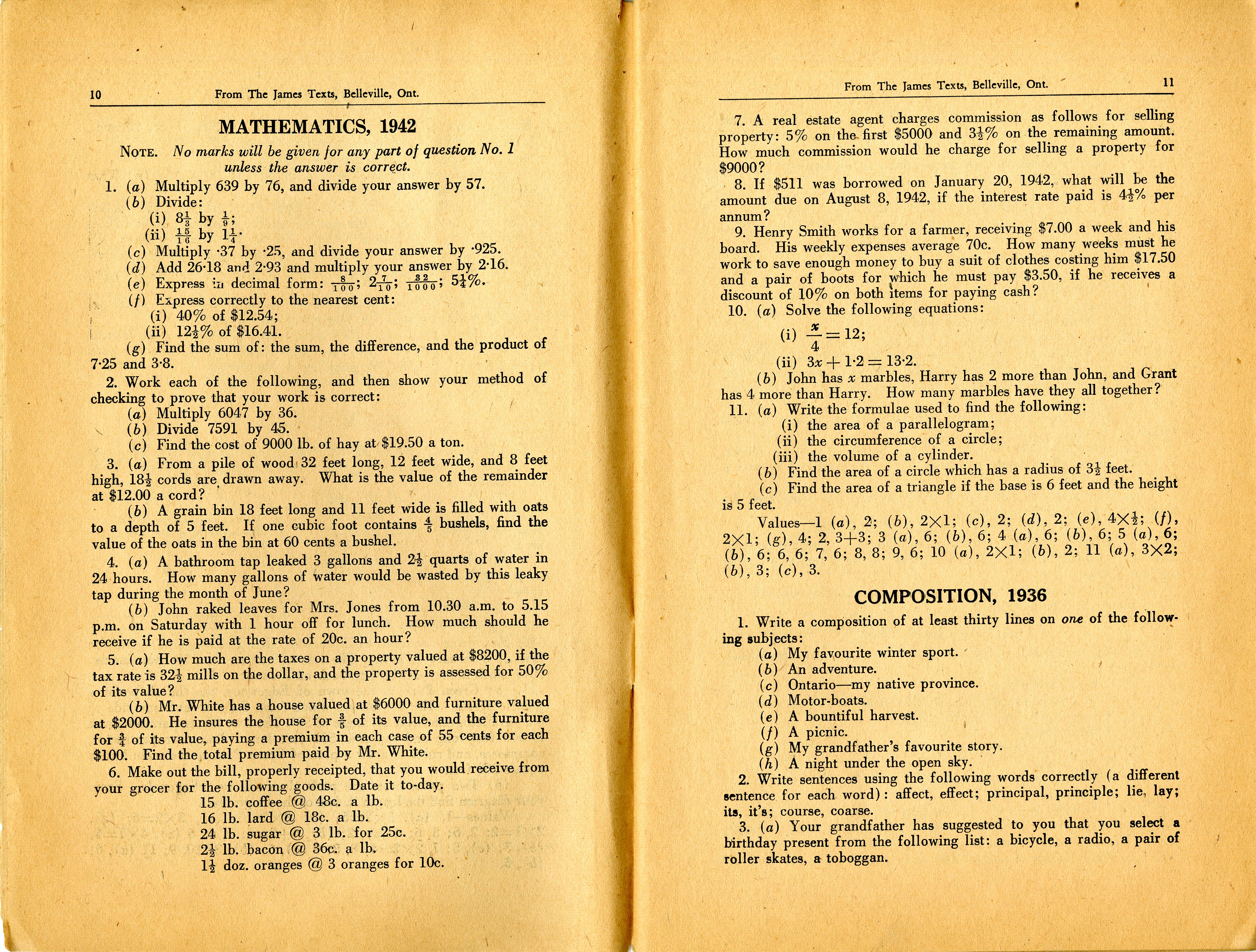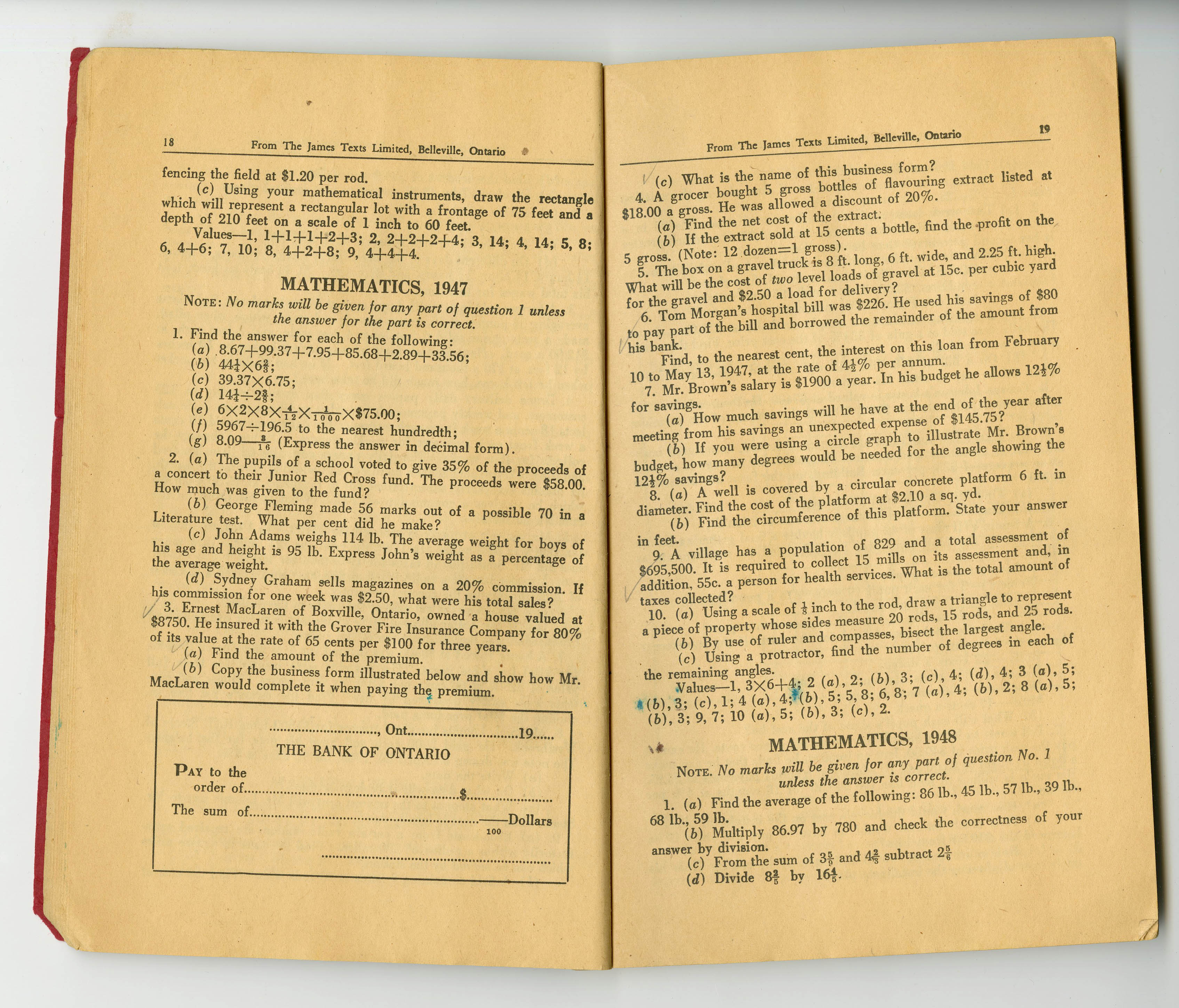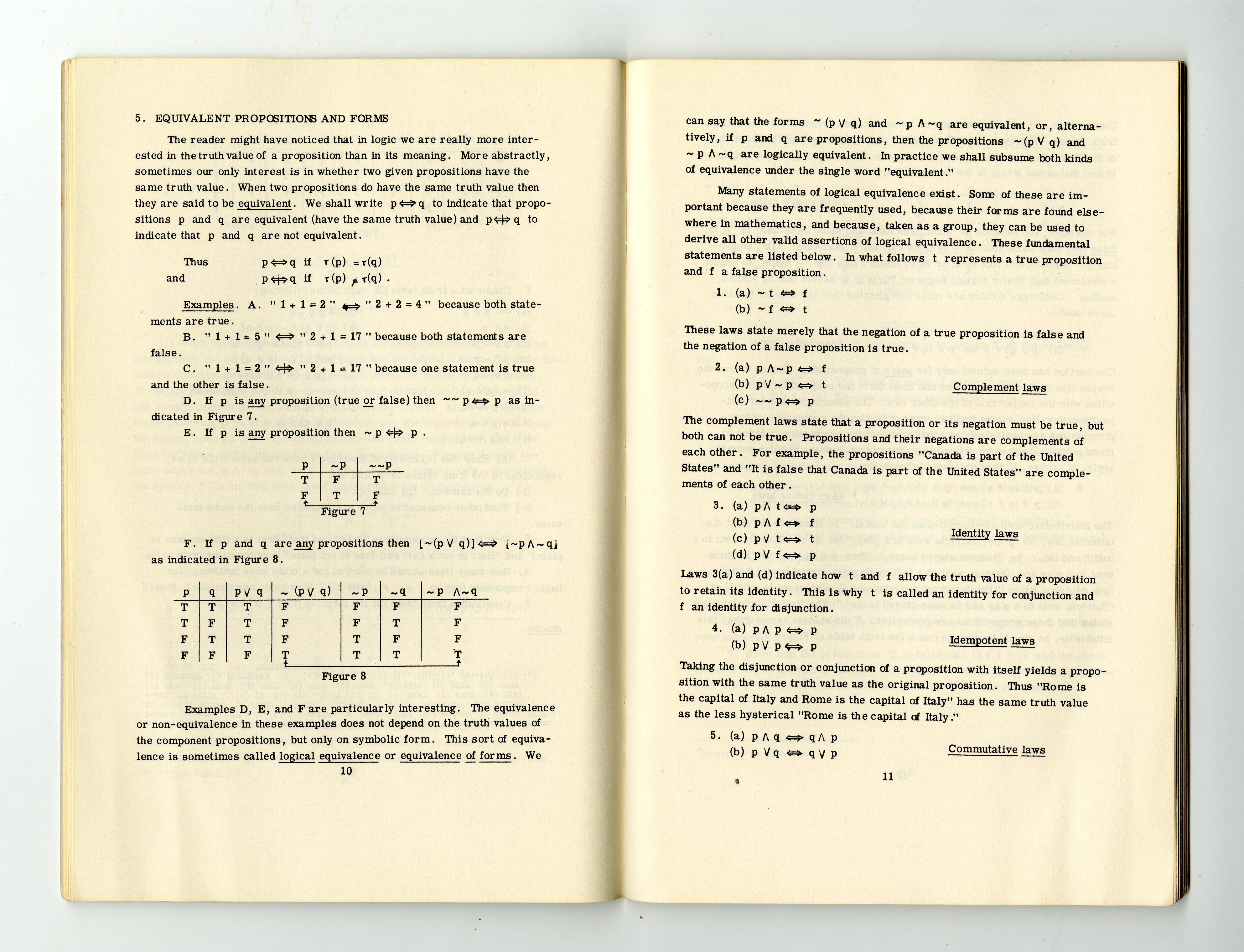The Progressive Movement - 1920s
This popular approach attempted to make mathematical education accessible and stressed the importance of teaching algebra to everyone.
The Activity Movement - 1930s
Multiplication tables were used less frequently, and an informal teaching style that focused on what students wanted to learn was introduced. It integrated different topics into math, but led to a decrease in basic mathematics skills.
The High School Entrance Examination (1942)
Although this exam is from 1942, it demonstrates the influence of the Progressive Movement. Elementary math education continued to focus on basic arithmetic. Algebra was not introduced until high school math classes. Until 1949, students were required to write an entrance exam to attend high school.
 Page 10 and 11 From The James Texts, 1942
Page 10 and 11 From The James Texts, 1942
The Life Adjustment Movement - 1940s
Two streams were introduced: “Life” math and academic math. Students in the life stream started to learn more mathematics related to trades. Students in life math did not focus on traditional math topics like algebra or geometry which were considered academic.
High School Entrance Reprints of Examination Papers (1947)
 Page 18 and 19 From The James Texts, 1947
Page 18 and 19 From The James Texts, 1947
The 1947 exam demonstrates the introduction of life skills math. This idea was introduced in the 1940s ‘Life Adjustment Movement’ leading schools to start 2 streams: life math and academic math. Life math focused on basic life skills, such as banking and mortgages.
Introduction to Logic and Sets (1958)
By the mid-20th century, more research was done into the theory of math and this led to the introduction of mathematical logic. This is an example of the academic math stream, and was an optional course for senior high school students who wanted to go into mathematics.
 Equivalent Propositions and Forms, 1958
Equivalent Propositions and Forms, 1958